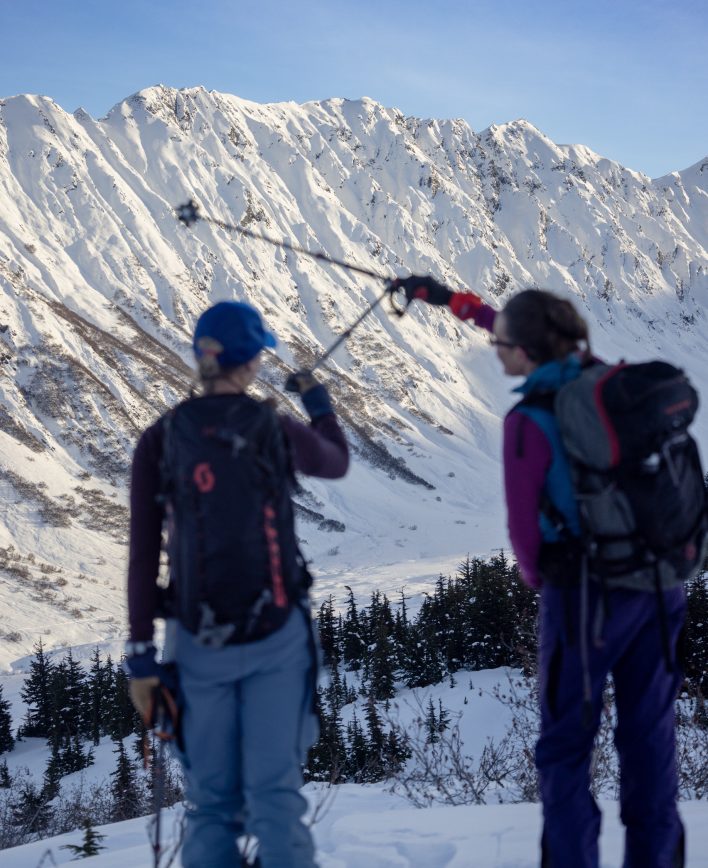Good communication starts early. That’s a fact Ginny White, a ski guide who has built a career on skiing in front of a camera in the backcountry, knows well. “It usually starts before you even go out,” she explains. By sharing her ideas, making emergency response plans and agreeing on goals with partners, White sets a tone she can easily carry onto the skintrack. She’s able to return to the agreed-upon plan with her partners when they have a disagreement, and, when things go wrong, the group members know what’s expected of them.

Should we ski spine A, B or Z? Jessie Janowski and Jill Carlile go window shopping in Alaska’s Chugach Mountains. Peter Wadsworth
White keeps conversations cool by being nonconfrontational. “Ask leading questions like, ‘Oh, didn’t we just hear a whumph?’ Or ‘Remember, yesterday, we read that report that something happened on this aspect?’” she recommends. “You can draw out the fact that maybe it’s not a good idea with more detail instead of just saying, ‘I don’t like this. I don’t want to do it anymore.’”
White tries to establish frontcountry friendships with her backcountry buddies to create easier pathways for conversations. “Not everyone has this luxury. A lot of times we get thrown into groups where we don’t necessarily know everyone,” she says. “But having at least one or two people in the group that you know on a deeper level outside of skiing, you already have the ability to communicate with that person.” By building these relationships, White knows how her ski partners will react to stressful situations, which helps her tailor her communication.
As far as when communication happens, sharing key observations is better done in real time, rather than waiting until the group is about to cross the point of no return. Per White, “Calling it as you see it is really simple and easy. It’s not even really a conversation. It’s more just a constant dialogue so that everyone in the group can hear or go through the thought process at the same time.” See a wind slab forming? Point it out as you walk by. Are you worried about solar input heating the slope? Tell your group as soon as the sun breaks through the clouds.
A tour comes full circle when, similar to how the group started its day with communication, everyone ends with a debrief. It can be formal, like White’s afternoon guide meetings, or as laid back as a group of friends having a beer at the tailgate and reliving the ups and downs of the day. “If you don’t talk about it, you might not realize that you did make a mistake, maybe you just got away with it that time,” White says. “Evaluating it and having conversations with either the people in your group or continuing that conversation with people who weren’t there to get an outside perspective is an awesome way to keep building our knowledge and confidence.”
This article was originally published in Issue No. 150, The Skills Guide. Looking for more skills-focused coverage? Check out “The Pregame” and “The Scene”. Even better, pick up a copy, or subscribe to read stories like these as soon as they are published in print.










Related posts: